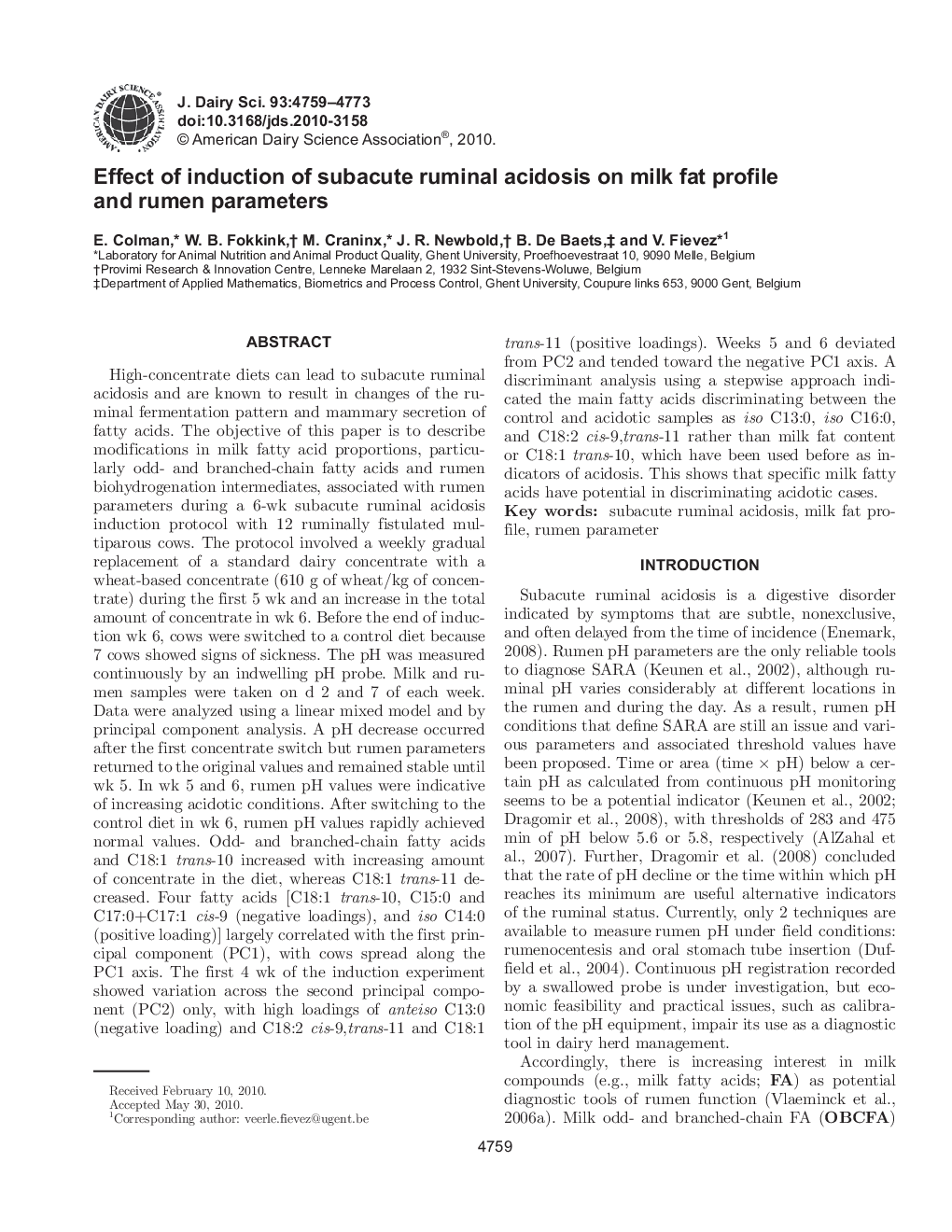| Article ID | Journal | Published Year | Pages | File Type |
|---|---|---|---|---|
| 5789885 | Journal of Dairy Science | 2010 | 15 Pages |
Abstract
High-concentrate diets can lead to subacute ruminal acidosis and are known to result in changes of the ruminal fermentation pattern and mammary secretion of fatty acids. The objective of this paper is to describe modifications in milk fatty acid proportions, particularly odd- and branched-chain fatty acids and rumen biohydrogenation intermediates, associated with rumen parameters during a 6-wk subacute ruminal acidosis induction protocol with 12 ruminally fistulated multiparous cows. The protocol involved a weekly gradual replacement of a standard dairy concentrate with a wheat-based concentrate (610Â g of wheat/kg of concentrate) during the first 5 wk and an increase in the total amount of concentrate in wk 6. Before the end of induction wk 6, cows were switched to a control diet because 7 cows showed signs of sickness. The pH was measured continuously by an indwelling pH probe. Milk and rumen samples were taken on d 2 and 7 of each week. Data were analyzed using a linear mixed model and by principal component analysis. A pH decrease occurred after the first concentrate switch but rumen parameters returned to the original values and remained stable until wk 5. In wk 5 and 6, rumen pH values were indicative of increasing acidotic conditions. After switching to the control diet in wk 6, rumen pH values rapidly achieved normal values. Odd- and branched-chain fatty acids and C18:1 trans-10 increased with increasing amount of concentrate in the diet, whereas C18:1 trans-11 decreased. Four fatty acids [C18:1 trans-10, C15:0 and C17:0+C17:1 cis-9 (negative loadings), and iso C14:0 (positive loading)] largely correlated with the first principal component (PC1), with cows spread along the PC1 axis. The first 4 wk of the induction experiment showed variation across the second principal component (PC2) only, with high loadings of anteiso C13:0 (negative loading) and C18:2 cis-9,trans-11 and C18:1 trans-11 (positive loadings). Weeks 5 and 6 deviated from PC2 and tended toward the negative PC1 axis. A discriminant analysis using a stepwise approach indicated the main fatty acids discriminating between the control and acidotic samples as iso C13:0, iso C16:0, and C18:2 cis-9,trans-11 rather than milk fat content or C18:1 trans-10, which have been used before as indicators of acidosis. This shows that specific milk fatty acids have potential in discriminating acidotic cases.
Keywords
Related Topics
Life Sciences
Agricultural and Biological Sciences
Animal Science and Zoology
Authors
E. Colman, W.B. Fokkink, M. Craninx, J.R. Newbold, B. De Baets, V. Fievez,
